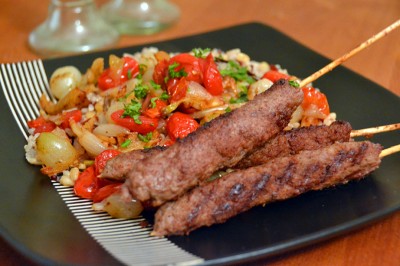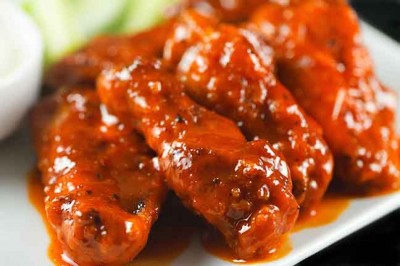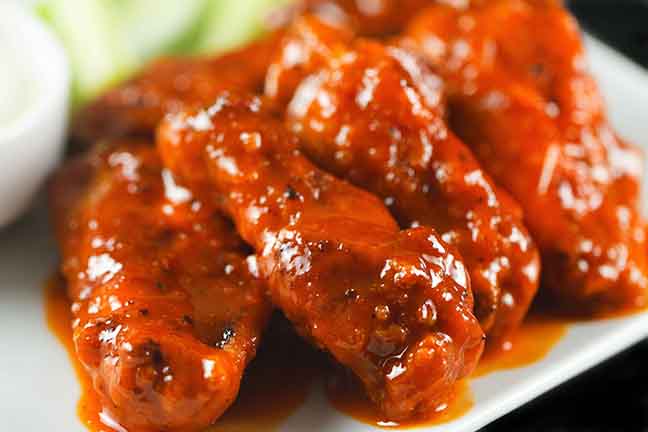Let me start by saying that this article is a follow-up to my article “Active Tasting — A Guide to Expanding Your Palate.” Picking out subtle flavors is going to be key in pairing your beers with food.
“I always cook with beer…and sometimes it even makes it into the food”
Food & beer Pairings are one of the newest trends when it comes to the craft beer scene and, in my opinion, is long overdue. Sommaliers have been suggesting wine pairings in restaurants for a long while, but beer has taken a back seat despite being much older historically. There are a lot of different methods for food and beer pairings and the concept seems to have become surrounded in shroud and mystery. In truth, pairings are pretty easy and can be very fun to play with as long as you know what you’re doing. Randy Mosher’s book, “Tasting Beer,” provides a very nice guide, which I will use and supplement here.
trends when it comes to the craft beer scene and, in my opinion, is long overdue. Sommaliers have been suggesting wine pairings in restaurants for a long while, but beer has taken a back seat despite being much older historically. There are a lot of different methods for food and beer pairings and the concept seems to have become surrounded in shroud and mystery. In truth, pairings are pretty easy and can be very fun to play with as long as you know what you’re doing. Randy Mosher’s book, “Tasting Beer,” provides a very nice guide, which I will use and supplement here.
Beer Pairings
For starters, let’s take the mystery out of the concept. Beer is food. It’s full of the same flavors that you can find in any solid-food dish. The fact that the brew comes in a glass on the side should not change how you view it. There are a couple of ways that beer can be viewed differently, but generally, we can just relate beer to being a side dish. To make it easier, however, we will start with reverse-pairings, which is matching the food to the beer instead of finding a beer to fit your dish.
This is where your Active Tasting comes into play. We must first deconstruct the beers and find out what the ingredients are, paying attention to which flavors are prominent and which are subtle. Let’s take my favorite beer style for example. I love Oktoberfest Marzens. They are a malt-forward lager with rich notes of brown sugar, graham cracker, toasted honey and often caramel. So in my mind, I re-create that. I picture a graham cracker on it with toasted honey and immediately decide that it would be better with cinnamon or peanut butter and chocolate. One option for pairings would be a peanut butter and chocolate chip cookie. On the other hand, if the Marzen has lots of caramel notes, you might go more in the salted caramel direction. This would lead you toward a salty appetizer like a charcuterie plate with salami, prosciutto and Gorgonzola cheese.
Pairing Types
There are a few different ways that you can play with the flavors in your glass and on your plate. Each can change your experience in a different way and may really surprise you.
RESONATING – This pairing style is the easiest by far,  but also has the least impact on enhancing your dining experience. Simply put, this is matching the flavors in your beer with your dish. The classical example is Spicy Buffalo Wings and an American IPA. Spice notes in the hot sauce and the spicy American hop varietals play very nicely together and amplify the spice levels. I also like to use this for lighter dishes like salads. The light fruity notes of a Witbier pair well with salads that use a citrus vinaigrette.
but also has the least impact on enhancing your dining experience. Simply put, this is matching the flavors in your beer with your dish. The classical example is Spicy Buffalo Wings and an American IPA. Spice notes in the hot sauce and the spicy American hop varietals play very nicely together and amplify the spice levels. I also like to use this for lighter dishes like salads. The light fruity notes of a Witbier pair well with salads that use a citrus vinaigrette.
CONTRASTING – This pairing style is a little more difficult and requires remembering a few rules. To create a contrasting pairing is using the properties of your beer to cut or wash down the flavors of your food. For example, Sweet flavors reduce the spicy heat of your food, so to contrast your buffalo wings, use an English nut brown ale or Belgian dubbel. For fatty dishes like duck confit or cream-based pastas like Fettuccine Alfredo, try a high-carbonation beer like a German Doppelbock or a Belgian Gueuze. The small bubbles will actually help wash down the fats and oils and act as a natural palate cleanser.
Acidity cuts bitterness
Sweet cuts spice
Carbonation cuts fats
HARMONIZING – This pairing style is by far the most fun. This is getting back to my example of the Oktoberfest paired with the salty, cured meats and Gorgonzola cheese. To do this, you identify what flavors go with your dish, but are not currently part of it. A great example would be a smoked salmon. The number one addition that anyone can suggest for smoked salmon is a lemon wedge. However, if instead of squeezing a lemon over your fish, you were to find a beer with lemon citrus flavors like a fruity Saison or American Pale, the beer could act as your missing component and amplify your experience. Another great example is pairing a Raspberry Lambic with Tiramisu. If you were to add something to Tiramisu, my first reaction would be fruit. Raspberries go great with cream and coffee flavors, so naturally, a Framboise pairs great with Tiramisu and creates a whole new experience. This style of beer pairings can be great fun and open up flavors you didn’t expect. Make it a game with your friends and see what crazy ideas you think just might work.
Big Picture
Remember that your food and beer both have multiple flavors going on so pay attention to make sure that each of the flavors in your beer is appropriate with your food. The citrus notes in a Belgian IPA may sound great with a chocolate brownie, but those hops don’t always play well with others. Your best weapon is to familiarize yourself with both the beer and the food and make sure to pay attention to all the flavors. Happy Pairings!
Follow me on twitter: @tcbeerdude



One thought on “A Chef’s Guide to Food & Beer Pairings”
Comments are closed.